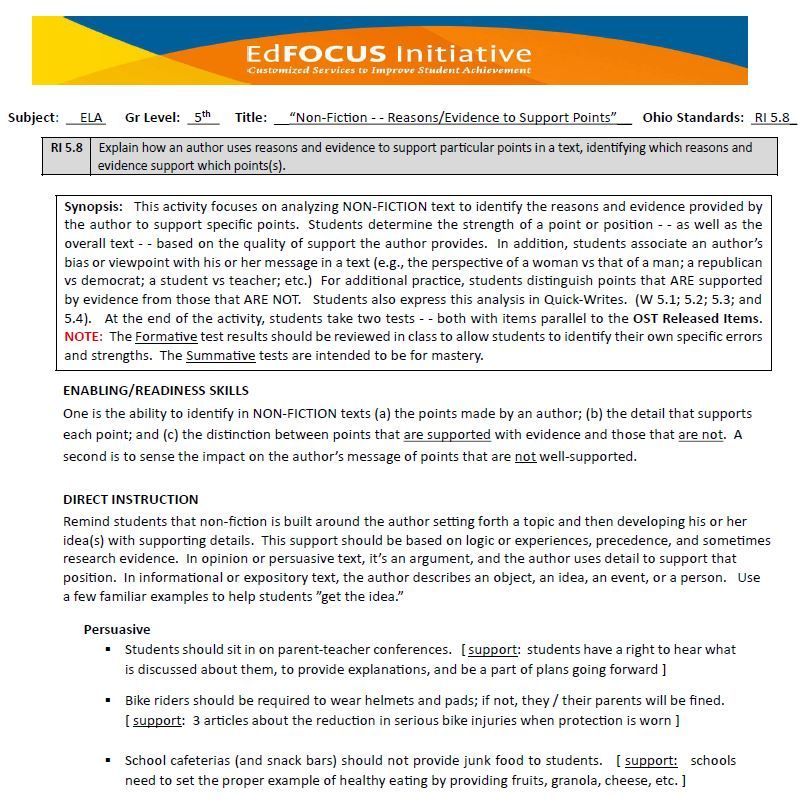Activity Description
Title: Non-Fiction - - Reasons/Evidence to Support Points
This ACTIVITY has a set of teaching-learning strategies proven to increase student mastery of this critical Informational standard - - analyzing a text to find reasons and evidence used by the author to support his or her points. In addition, students associate an author’s bias or viewpoint with his or her message in a text (e.g., the perspective of a woman vs that of a man; a republican vs democrat; a student vs teacher; etc.) For additional practice, students distinguish points that ARE supported by evidence from those that ARE NOT. The analysis of non-fiction texts in terms of the support or evidence provided for points made is also a great foundation for writing and the basis for Quick-Writes. (W 5.1; 5.2; 5.4 and W 5.8 and W 5.9 - - research-writing ). [At Grades K-5, each Activity attaches student-sized texts, templates, and test items that teachers can quickly print and use immediately in class.]
Enabling Skills: (1) identify the points made by an author; (b) list the detail that supports each point; and (c) distinguish between points that are supported with evidence and those that are not .
Direct Instruction: Suggested teaching strategies are given that model for students what they need to do to begin their journey toward mastery. With sample texts, students practice distinguishing points made and supported in persuasive writing vs informational writing. Other sample texts are provided for students to identify the points made, the evidence or support included, and determine whether that support is strong enough to make the point acceptable. Students also determine the impact of the author’s evidence and support on the overall quality of the text.
Quick-Writes: Standards-based writing prompts are provided that require students to document that they have internalized the core ideas of the standard(s) and can show independent mastery. In this Activity, the Quick-Write asks students to add another point to a sample text and then include supporting evidence for that point.
High-Stakes Look-Alike Assessments: At Grades 3-8, the Activities include two tests - - one for practice - - followed by classroom analysis of errors made - - and the second test to determine mastery. The test items are constructed to look exactly like those items students will encounter on their High-Stakes Tests.
CUSTOMER: Thanks for considering this Activity as part of your approach to your state’s ELA standards. If you have any comments as to how it worked - - or didn’t! - - we’d welcome them! See the contact information to send us feedback. - - the EdFOCUS Team
This teaching activity comes with one hour of online instruction and guidance from a trained EdFOCUS professional. You will be contacted shortly after purchase with more details.
Product Page

